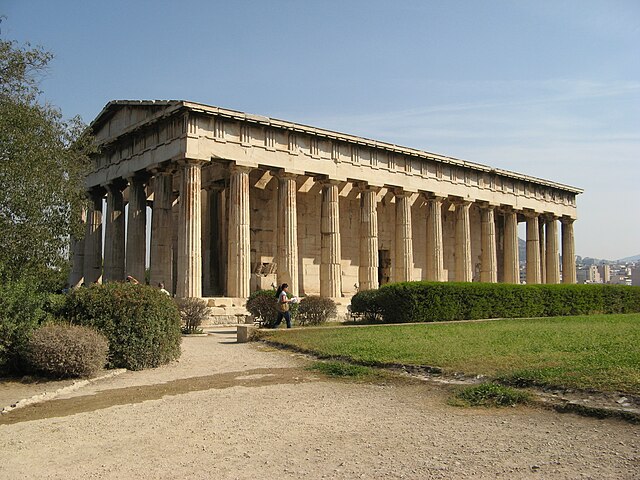Women in classical Athens
The study of the lives of women in classical Athens has been a significant part of classical scholarship since the 1970s. The knowledge of Athenian women's lives comes from a variety of ancient sources. Much of it is literary evidence, primarily from tragedy, comedy, and oratory; supplemented with archaeological sources such as epigraphy and pottery. All of these sources were created by—and mostly for—men: there is no surviving ancient testimony by classical Athenian women on their own lives.
The Grave Stele of Hegeso (c.410–400 BC) is one of the best surviving examples of Attic grave stelae. Beginning around 450, Athenian funerary monuments increasingly depicted women as their civic importance increased.
Athenian girls would have played with dolls as children. Plangon, the young girl on this grave stele, carries a doll in her right hand.
Marriage was considered the most important part of a free Athenian woman's life. This box, known as a pyxis, would have been used to hold a woman's jewellery or cosmetics and is decorated with a wedding-procession scene.
Though respectable Athenian women were expected to stay out of the public eye, responsibilities such as fetching water from the fountain house on the edge of the agora would have brought them out of the house.
The city of Athens during the classical period of ancient Greece was the major urban centre of the notable polis (city-state) of the same name, located in Attica, Greece, leading the Delian League in the Peloponnesian War against Sparta and the Peloponnesian League. Athenian democracy was established in 508 BC under Cleisthenes following the tyranny of Isagoras. This system remained remarkably stable, and with a few brief interruptions remained in place for 180 years, until 322 BC. The peak of Athenian hegemony was achieved in the 440s to 430s BC, known as the Age of Pericles.
Early Athenian coin, 5th century BC. British Museum.
The modern National Academy in Athens, with Apollo and Athena on their columns, and Socrates and Plato seated in front.
The Acropolis imagined in an 1846 painting by Leo von Klenze
The Temple of Hephaestus in modern-day Athens








